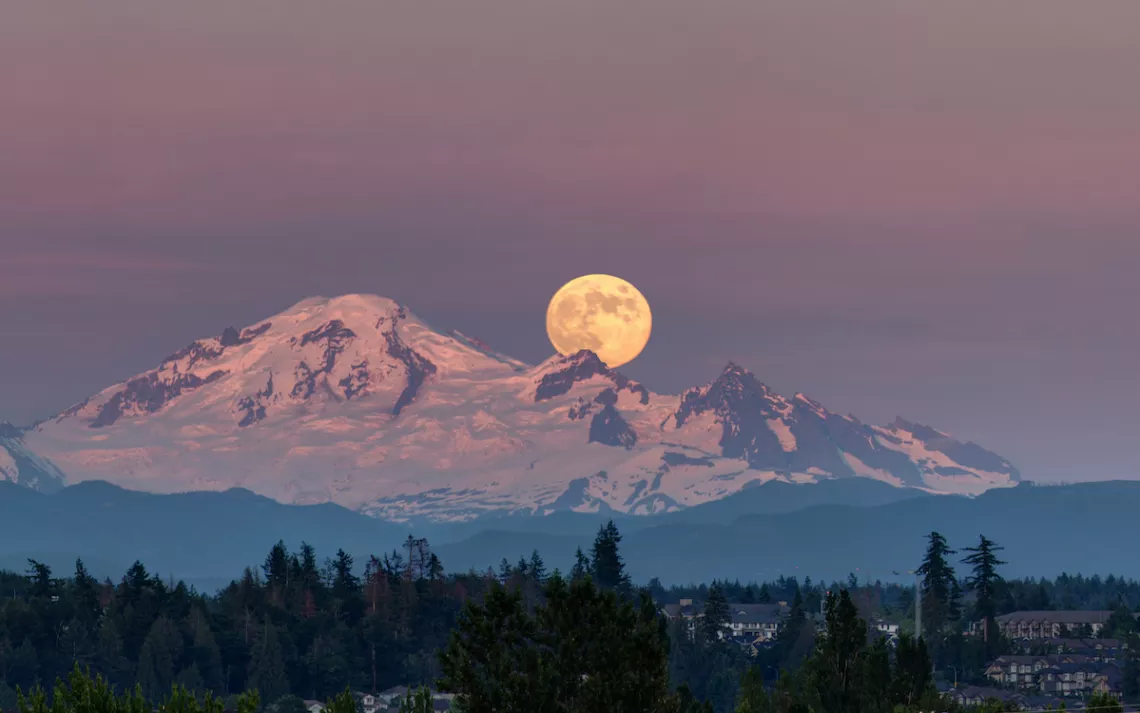September Astronomical Highlights: The Equinox and a Micromoon
This month brings us a big day and a small moon

Photo by jamesvancouver/iStock
Autumnal Equinox
For those of us in the Northern Hemisphere, this month brings the autumnal equinox, which falls on September 23 at 12:50 A.M. PDT. Day and night are of nearly equal length around this date, and on the equinox itself, the sun will rise directly east and set directly west.
An old wives’ tale says that on the equinoxes, Earth is “balanced” and it is possible to stand an egg on one end. In fact, you can balance an egg on its end any day of the year, provided you have a steady hand.
But something special does happen in conjunction with the equinox. For reasons not fully understood, your chance of seeing the Northern Lights increases around the time of the equinoxes—more aurorae are spotted in March, April, September, and October than at other times of the year. These dancing curtains of light happen when solar flares from the sun shoot particles toward Earth and interact with our atmosphere. You can keep track of the sun’s activity level at websites such as Spaceweather.com or with NOAA’s 30-minute aurora forecast. You can also read reports of recent sightings and check on the location of the current auroral oval and the level of activity.
Seasonal Constellations
The sun’s path through the sky is known as the ecliptic. An 8° band on either side of the ecliptic marks the zodiac, the region through which the moon and planets pass. Because the moon takes about one month to orbit Earth, it visits each of the zodiacal constellations every month. By tracing the path of the moon across the sky, you can learn the location of the zodiacal constellations and some of their brighter stars. This month is as good as any to give it a try.
On September 5, a first quarter moon is near Jupiter in the constellation Ophiuchus, sometimes called the “thirteenth” constellation of the zodiac. Just below this pair is Antares, a red supergiant that is the brightest star in Scorpius. The moon hops over Saturn in Sagittarius from September 7 to 8.
Full moon is September 13 for most of the United States, or just after midnight on September 14 for the East Coast. September’s full moon is also the harvest moon, but this year it occurs at apogee, when the moon is farthest in its orbit from Earth. This concurrence is sometimes called a micromoon, which means this year’s harvest moon will look a bit smaller and dimmer than a typical full moon. Look for the harvest moon floating among the stars of Aquarius on September 13, washing out the fainter stars in its vicinity.
Aldebaran, the brightest star in Taurus, gets a visit from a waning moon on September 19. The moon will lead you to Leo the Lion and its brightest star, Regulus, on September 26, but you will have to rise before the sun in order to see them.
Seasonal Constellations
Constellations are generally associated with certain seasons. For example, spring brings Leo, Virgo, and Boötes; summer includes Sagittarius, Scorpius, and Cygnus; fall ushers in Andromeda, Pegasus, and Capricornus, and winter is known for the distinctive constellations of Taurus, Orion, and Perseus, among others.
But you can see these constellations “out of season” if you are willing to stay up all night or get up before dawn. As fall begins, Andromeda and the Great Square of Pegasus are visible in the east, rising as night falls and continuing to ascend into the sky as the evening wears on. If you stay up even later, you’ll eventually see the winter constellations Taurus and Orion appearing over the horizon around midnight, with Leo and other spring constellations showing up before dawn breaks and washes out the stars.
 The Magazine of The Sierra Club
The Magazine of The Sierra Club







